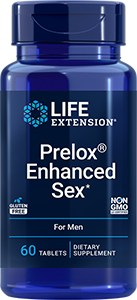| Obtaining dietary carbohydrates from foods (e.g., vegetables, whole fruits, and whole grains) is an important component of an effective anti-aging weight-management program. What's important to understand, however, is that not all carbohydrates are created equal. Complex carbohydrates, such as those found in leafy vegetables and whole grains, are an important part of a healthy diet. They are absorbed slowly and do not cause rapid increases in blood sugar levels. To better monitor the kind of carbohydrates we eat, it's helpful to understand the concepts of “glycemic index” and “glycemic load.” The glycemic index is a measure of how much insulin a particular food will stimulate based on its carbohydrates. The glycemic load, which is based on the actual impact that typical meals have on blood glucose levels, is probably a better indicator because not all foods with a high glycemic index actually stimulate the rapid release of insulin (watermelon, for instance). Once again, foods with a high glycemic load tend to stimulate overproduction of insulin and should be avoided. Consuming foods high in refined carbohydrates (e.g., white bread, cookies, candy, soda, white potatoes, white rice) and foods high in saturated fat (e.g., luncheon meats, beef, bacon, tropical oils) is a poor weight-management strategy. Instead, mixed meals that contain easily digested animal protein (e.g., fish, skinless chicken, turkey), unrefined fiber-rich carbohydrates (e.g., wild rice, yams, broccoli), and foods high in monounsaturated fat (e.g., olives and olive oil, pistachio nuts, avocados) are more effective in achieving a healthy, optimal body weight. Essential fatty acids (omega-3) found in fish oils promote thermogenesis, the process by which foods are converted to heat. Because of this, the body burns calories instead of converting them into fat for storage (McCarty 1994). Another benefit of essential fatty acids is to make cell membranes more sensitive to the effects of insulin (Storlien et al 1986, 1987, 1996; Borkman et al 1993; Vessby et al 1994; Pan et al 1995). Eating fish is an excellent way to promote weight loss. Many people also choose to take essential fatty acid supplements that are high in EPA and DHA extracted from fish oils. |















